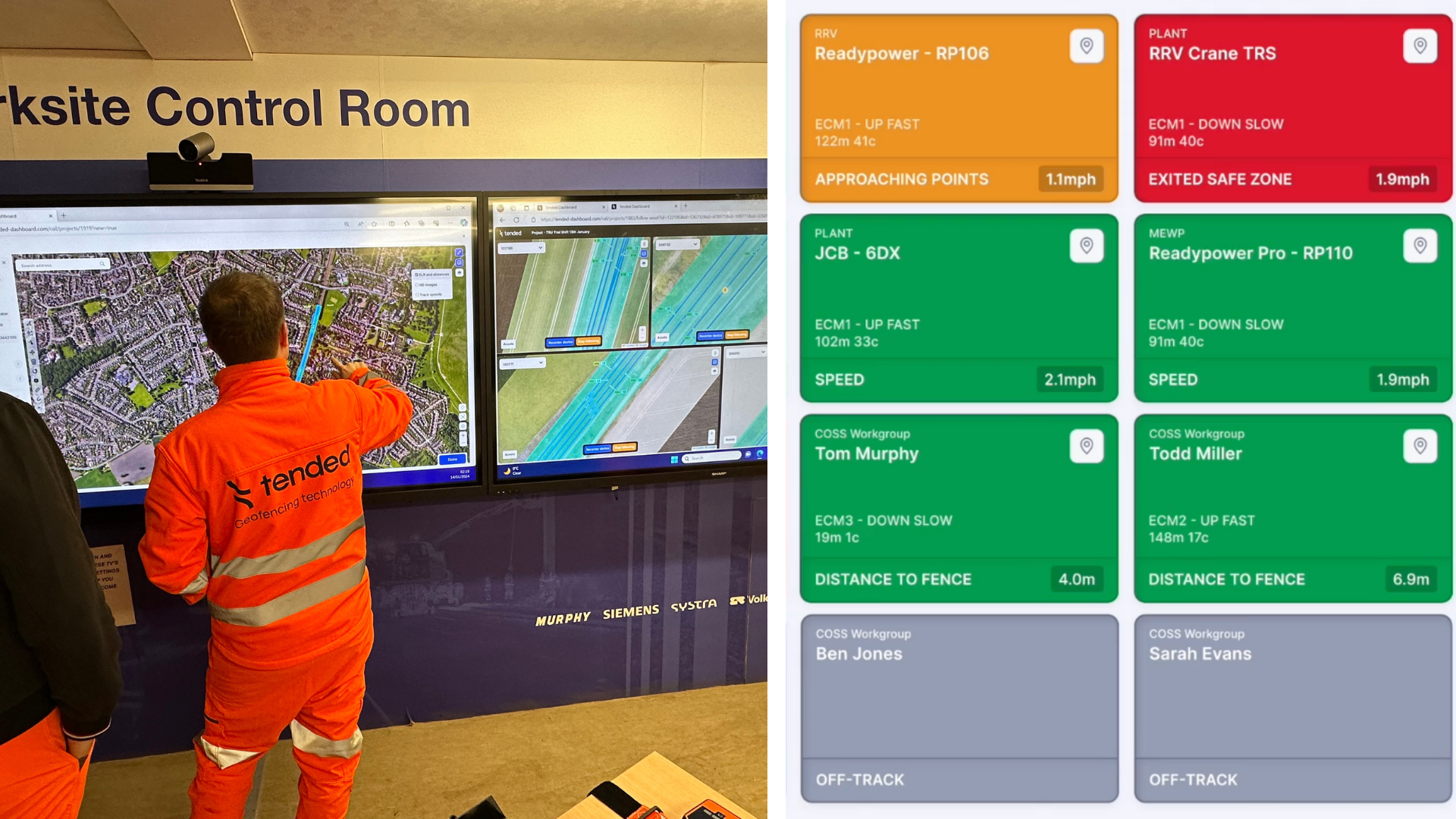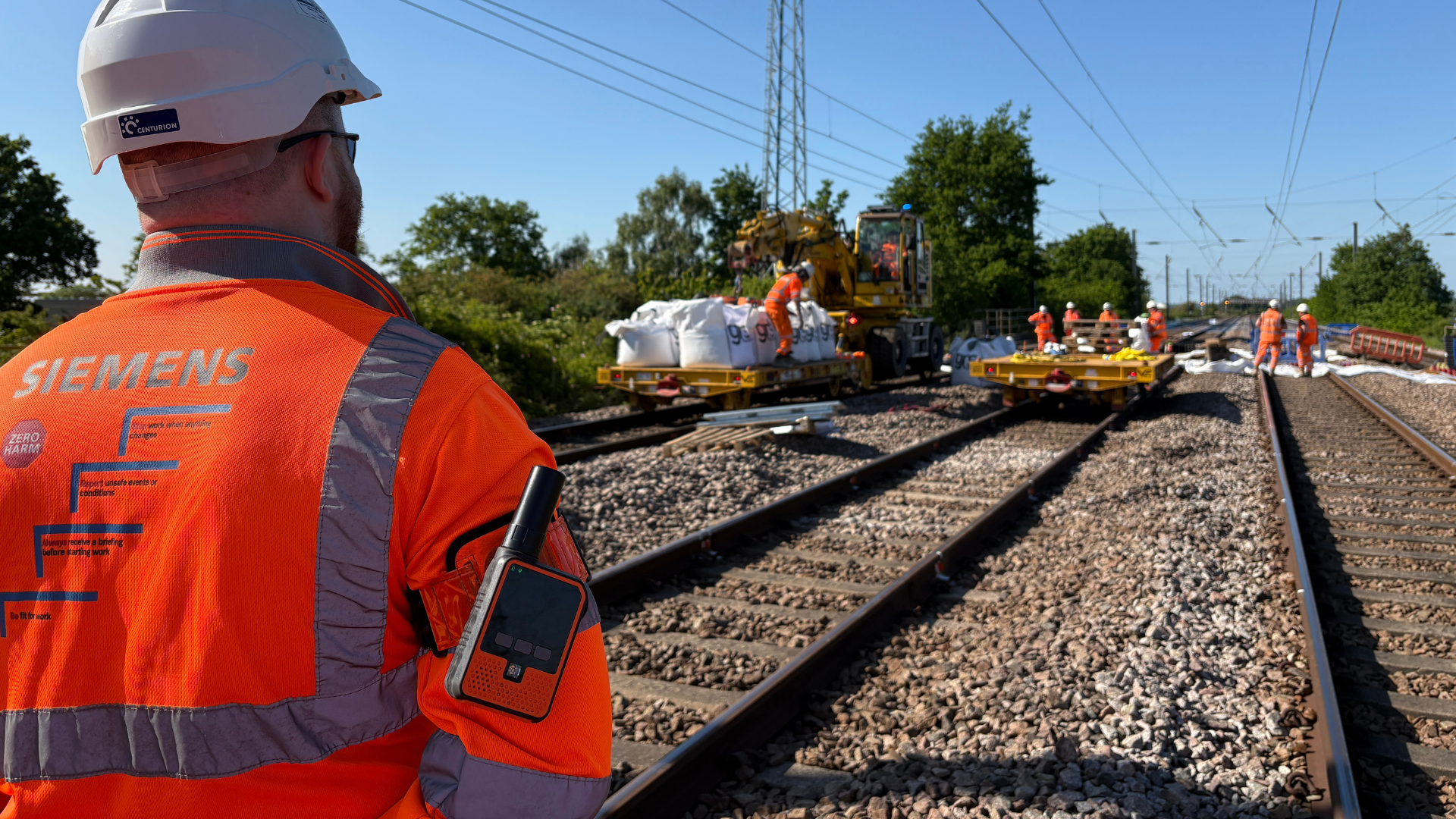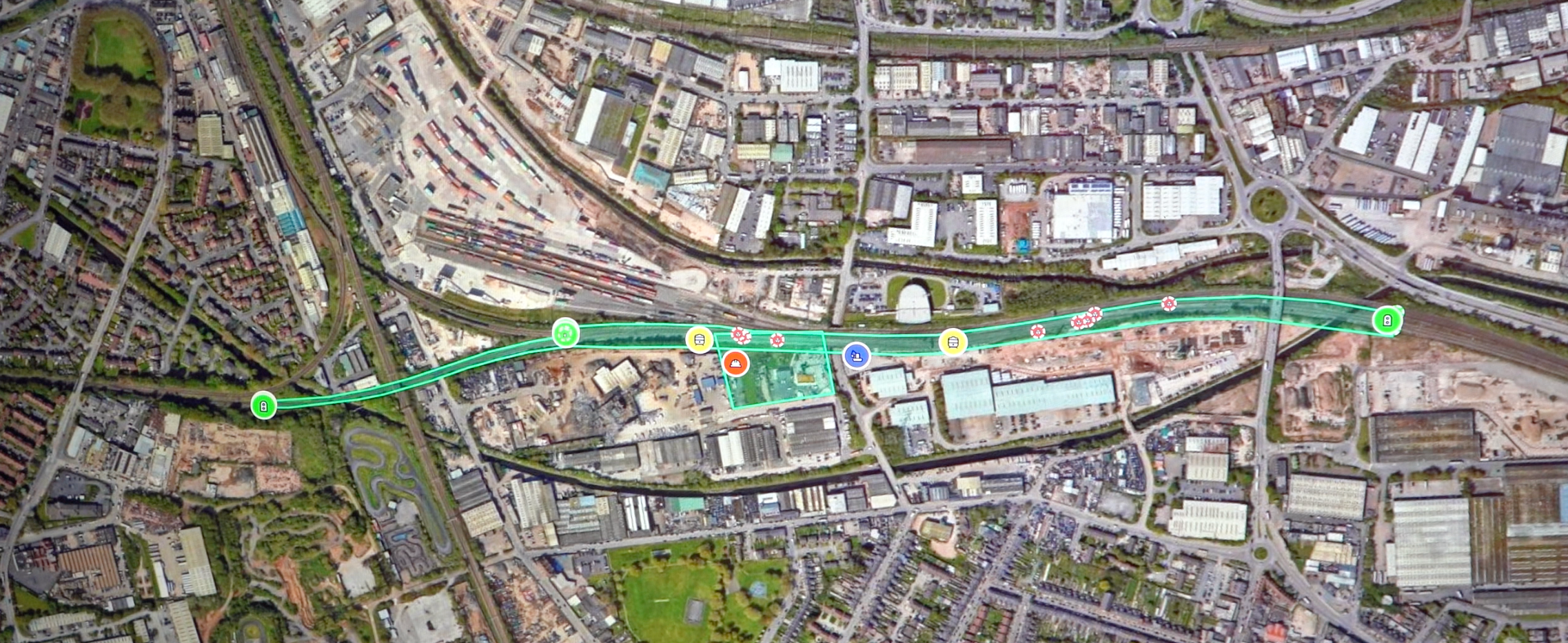At Tended, we're driven by a singular mission: to put an end to preventable accidents and fatalities. In the rail industry, where regular maintenance and renewal works are vital to maintain rail infrastructure, there are a range of significant challenges posed by the hazardous nature of rail environments. Minor mistakes stemming from human error can significantly impact safety and project efficiency, leading to devastating consequences, many of which are preventable.
That's why we developed the Digital Worksite, an innovative geospatial system, under the European Space Agency's (ESA) Business Applications and Space Solutions (BASS) Programme, with the support of the UK Space Agency. Our goal was to directly address the safety challenges present in rail, specifically around possession management.
With the close proximity of rail lines, complex worksites, and unpredictable human factors, workers are at risk of losing situational awareness and making mistakes. This could result in protection equipment being misplaced, workers straying onto live railway infrastructure, points run throughs or equipment being left on the line.
These increase the risk of incidents such as trains colliding with equipment, infrastructure damage, and near misses, causing damage and lengthy network delays. The financial implications are also substantial. For example, the Rail Safety and Standards Board (RSSB) estimates the cost of plant or machinery travelling through incorrectly set points at £250,000 per incident due to infrastructure repairs and delays.

Development of the Digital Worksite
The Digital Worksite was developed to move beyond conventional, human-reliant practices like diagrams, paper-based plans, 2-way communication, and physical barriers to manage operations during possessions. It provides unrivalled worksite visibility, providing a live bird’s-eye view over onsite operations to enable the early identification of unsafe events and reduce the risk of human error.
It enables organisations to create virtual boundaries, or geofences, for designated safe zones on their worksite and specify the location of safety equipment, ensuring protections are in the correct place before work begins.
The system automatically generates a live online map displaying real-time locations and movements of critical assets and equipment. Alerts notify supervisors if risks are identified, such as vehicles approaching critical infrastructure or speed limits being exceeded. Not only does this enable the early identification of unsafe events, but it also significantly reduces the need for frequent 2-way communication with onsite teams.
For workers on the ground, positioning devices alert them should they exit safe work limits, prompting them to move back to safety and helping them maintain a safe distance from open lines and other onsite hazards.
Partnering with RTKFnet has enabled us to integrate satellite navigation techniques like real time kinematics (RTK), allowing us to provide real-time, centimetre-level accuracy to position vehicles and assets onsite. Satellite Earth Observation Imagery has been another instrumental aspect of this project for the mapping of digital worksites, especially in areas where accurate maps are typically unavailable.

Where are we now
Our collaboration with ESA has accelerated our progress in developing the Digital Worksite and new ways of working in rail. This space-enabled 'digital twin' is a game-changer, helping to mitigate human errors and provide oversight of live operations using a completely fresh approach.
During a pilot with ESA, we successfully demonstrated the system over 9,000 operational hours across live worksites, building strong confidence among procurement and safety teams. Independent analysis suggests that the adoption of the Digital Worksite not only improves worker safety but also has the potential to deliver up to £60 million per year in efficiency savings across the UK rail network.
Continuing to work alongside ESA, we’re exploring new and innovative ways to address industry challenges and inefficiencies. This includes the development of virtual worksite marker boards which will vastly improve worker safety and increase available working time within possessions.
Enrico Spinelli, Applications Engineer at ESA, said: “We are pleased to have supported the Digital Worksite project, which is improving the safety and efficiency of rail maintenance and infrastructure. This project has potential for wide-scale adoption across the industry, saving lives and increasing efficiency and is already enjoying remarkable commercial success.”
Dr Craig Brown, Investment Director at the UK Space Agency, said: “Space data and services provide a huge opportunity to improve safety and operational efficiency across many different sectors, and this is a clear demonstration of using space in an innovative way to deliver those benefits. The Digital Worksite showcases how satellite positioning and imagery can transform rail maintenance into a safer, smarter, and more responsive environment. By turning worksites into intelligent ecosystems, this project not only addresses long-standing safety challenges but also sets a new benchmark for operational excellence across infrastructure and transport.”
Leo Scott Smith, CEO and Founder, here at Tended stated: "The ESA BASS programme has been invaluable, offering significant benefits to both our company and the broader rail industry across the UK and Europe. ESA's support in developing this safety innovation, through access to crucial space-based assets, has been instrumental in achieving the high accuracy and realistic representation of live rail environments. ESA has been pivotal in our journey in ensuring people stay safe on the rail network, providing expertise and resources that have accelerated the development and deployment of this important safety innovation."

Working with ESA, along with the successes of the Digital Worksite, has also generated momentum in the wider rail industry. We've secured a 4-year contract for the Network Rail Wales & Borders route, with additional contracts with Siemens Mobility, SPL Powerlines, and others across Europe. This commercial success marks a new era of rail safety for those working in safety-critical rail environments across Europe, and we’re incredibly proud to be at the forefront of this industry change.



